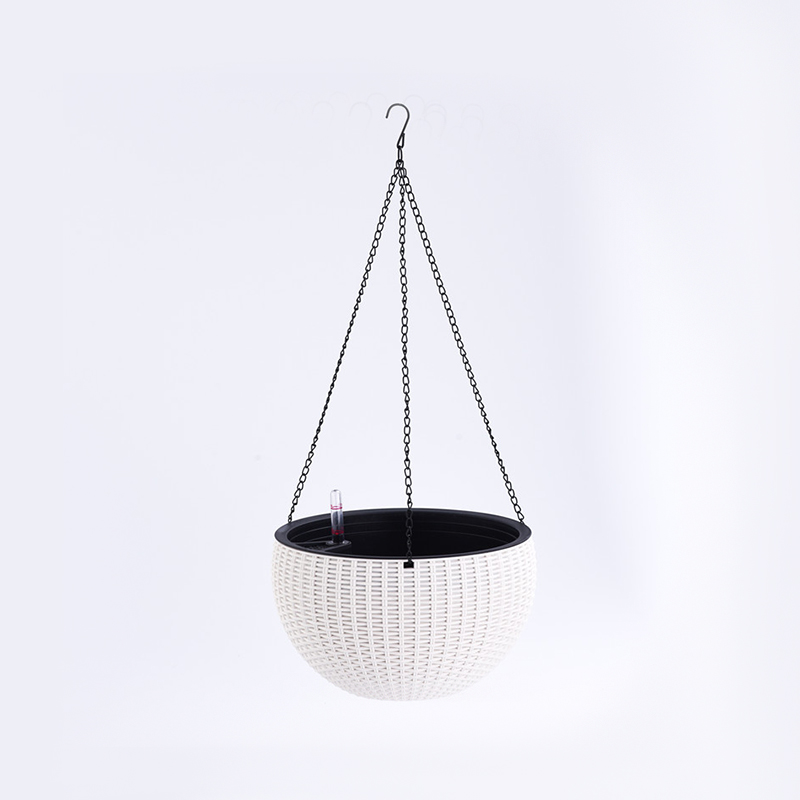When it comes to growing healthy plants, the container you choose plays a much larger role than just aesthetics. While the visual appeal of options like a rattan plant pot basket or colorful plant pots indoor may be the one thing to catch your eye, the functionality of the pot — especially the presence of drainage holes — is essential for maintaining plant health over time.

Drainage holes help regulate moisture levels in the soil, preventing excess water from accumulating at the bottom of the pot. When water has nowhere to escape, it tends to stagnate, creating an environment that encourages root rot and the growth of harmful fungi. Even the more vibrant, colorful plant pots indoor can become a hazard if they lack adequate drainage. Houseplants are particularly sensitive to overwatering, and many suffer not from neglect but from too much attention in the form of frequent watering.
A rattan plant pot basket, often used for its rustic charm and texture, typically needs to be paired with an inner plastic pot that has drainage holes. Without this pairing, the decorative outer shell might trap water, turning an appealing design element into a source of stress for the plant. This combination allows for both visual appeal and practical support, offering a balance between form and function.
In gardens, the layout often includes decorative elements like a decorative plastic garden fence, which separates flower beds or defines outdoor spaces. Within these sections, plant pots of various materials are placed, each serving a different role. Whether a pot sits in a formal garden corner or inside a cozy sunroom, drainage remains essential. Outdoor environments may offer more natural drying through sunlight and airflow, but even then, a pot without holes can become waterlogged after a heavy rain.
The importance of drainage increases when dealing with compact or non-porous materials like plastic. Colorful plant pots indoor made from plastic can retain water longer than terracotta or clay alternatives. While this may benefit someone who tends to forget watering, it also raises the risk of overwatering if the pot lacks holes. This is why many plastic pots are designed with pre-formed perforations or removable plugs to encourage better water flow.
One overlooked but important detail is the type of soil used. Dense or overly absorbent soils can clog drainage systems or delay the outflow of water. In such cases, even a well-designed rattan plant pot basket can fall short if the inner pot or liner doesn’t provide enough drainage. It's not only the material or size of the container that matters, but how all components — from soil to pot type — interact with each other.
The aesthetics of gardening are undeniably important. Gardeners often pair their flowerbeds with a decorative plastic garden fence to create a neat and vibrant look. Alongside this, they might choose pots that add color or texture to the space. The use of colorful plant pots indoor brings cheerfulness into a room and can reflect personal style. However, none of these efforts will matter much if the plants inside the pots start to suffer from poor drainage. Health should come one — beauty will follow naturally from thriving greenery.
Moreover, root systems need air just as much as they need water. Without proper drainage, roots remain submerged, depriving them of oxygen and pilot to suffocation. The same lush-looking rattan plant pot basket can become a trap if water lingers at the bottom. That's why even decorative containers should be chosen with care, and ideally, should house pots with holes that allow excess water to escape.
In conclusion, drainage holes are not optional — they’re a fundamental feature of any container meant for growing plants. Whether you’re arranging a row of colorful plant pots indoor by your window or lining your patio with containers bordered by a decorative plastic garden fence, ensuring that each pot has proper drainage can be the difference between thriving foliage and failing roots. And while a rattan plant pot basket can bring warmth and elegance to your plant display, its success will always depend on what lies beneath — and whether water can truly flow out as needed.

 English
English 日本語
日本語 Español
Español Deutsch
Deutsch عربى
عربى

